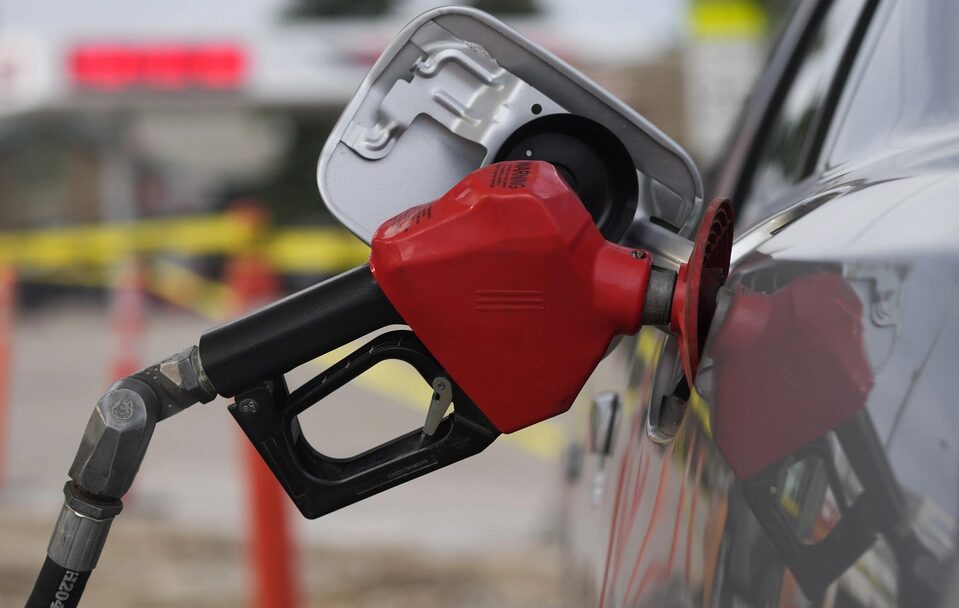As fuel costs continue influencing American travel budgets, understanding how to navigate fluctuating gas prices becomes essential for road trip planning and vacation budgeting. US travelers face varying regional fuel costs that can significantly impact transportation expenses, with price differences between states sometimes exceeding $1 per gallon. Smart travelers who monitor gas price trends, utilize fuel-saving strategies, and understand seasonal pricing patterns can substantially reduce travel costs while maintaining flexible itineraries. Whether planning cross-country road trips, weekend getaways, or daily travel, knowing how to track and respond to fuel price fluctuations helps travelers make informed decisions about route selection, travel timing, and alternative transportation options that maximize vacation value.
Fuel costs represent one of the largest variable expenses in road trip budgets, making price awareness crucial for cost-effective travel planning. Gas price monitoring tools and travel strategies help mitigate budget impacts while maintaining travel flexibility.
Regional price variations across the United States create opportunities for strategic planning that can reduce overall fuel expenses through informed route selection and timing decisions. Smart travelers leverage price tracking tools and regional knowledge.
Travel budget optimization requires understanding both current price trends and money-saving strategies that reduce fuel consumption without sacrificing travel experiences. Practical approaches deliver measurable cost savings.
Understanding Regional Gas Price Variations
State-by-state fuel prices vary dramatically due to regional taxes, distribution costs, refinery proximity, and local market conditions. West Coast states typically experience highest prices due to environmental regulations, unique fuel blends, and limited pipeline infrastructure.
Southeastern states often offer lowest fuel costs through competitive markets, lower state taxes, and proximity to Gulf Coast refineries. Regional price patterns remain relatively consistent, helping travelers predict cost variations along planned routes.
Urban versus rural pricing creates additional cost differences, with metropolitan areas generally charging premium prices due to higher operating costs and real estate expenses. Highway corridor stations near interstate exits typically charge convenience premiums.
Border pricing strategies by gas stations near state lines often reflect lower-tax states attracting customers from neighboring high-tax areas. Strategic fuel stops can yield significant savings on long-distance trips.
Effective Price Monitoring Tools and Resources
AAA Gas Prices provides reliable national data and state averages that help travelers understand current market conditions and recent trends. Daily updates reflect market changes affecting travel planning decisions.
GasBuddy app enables real-time price checking at specific stations along planned routes, with crowd-sourced updates ensuring accuracy. Trip cost calculators help budget entire road trips based on vehicle efficiency and route distances.
Waze navigation app integrates gas price information into route planning, showing nearby station prices while driving. Real-time updates help drivers make informed fueling decisions during active trips.
US Energy Information Administration offers historical data and market analysis that illuminate seasonal patterns and long-term trends affecting travel budgets. Industry insights help predict future movements.
Seasonal Price Patterns and Travel Timing
Summer driving season from Memorial Day through Labor Day consistently brings highest annual prices due to increased demand and refinery switches to summer-blend fuels. Peak travel periods coincide with maximum fuel costs.
Winter months typically offer lower prices as demand decreases and refineries produce less expensive winter blends. Off-season travel provides dual benefits of lower fuel costs and reduced tourism crowds.
Spring and fall shoulder seasons deliver moderate pricing while offering pleasant weather conditions and manageable tourist volumes. Strategic timing maximizes travel value through multiple advantages.
Holiday weekend patterns show pre-holiday price increases followed by post-holiday decreases as demand cycles through peak periods. Flexible travelers can schedule trips to avoid premium pricing.
Fuel-Efficient Travel Strategies
Vehicle maintenance including proper tire inflation, clean air filters, and regular tune-ups significantly improves fuel efficiency and reduces per-mile costs. Preventive maintenance delivers ongoing savings.
Driving behavior modifications such as moderate speeds, gentle acceleration, and cruise control usage can improve fuel economy by 20-30% on highway trips. Smooth driving equals cost savings.
Route optimization through GPS planning that minimizes distances, avoids traffic congestion, and reduces elevation changes lowers overall fuel consumption. Efficient routing saves money and time.
Load reduction by removing unnecessary cargo, roof racks, and heavy items decreases vehicle weight and aerodynamic drag, improving fuel efficiency. Lighter vehicles consume less fuel.
Alternative Transportation Considerations
Rail travel alternatives through Amtrak routes offer fixed pricing and predictable costs that sometimes prove more economical than driving for long-distance trips. Train travel eliminates fuel concerns while providing scenic experiences.
Bus services including Greyhound and regional carriers provide budget-friendly options for intercity travel without vehicle expenses. Motorcoach travel offers substantial savings compared to driving costs.
Flight comparison for long distances may reveal competitive pricing when fuel costs, accommodation expenses, and travel time are factored into total trip costs. Comprehensive budgeting identifies best values.
Hybrid travel approaches combining flights to regional hubs with rental car usage for local exploration can optimize both costs and convenience. Strategic mixing of transportation modes maximizes efficiency.
Budget Planning and Cost Management
Fuel cost calculators enable accurate trip budgeting based on vehicle specifications, planned distances, and current price ranges. Realistic budgets prevent unexpected expenses and trip disruptions.
Contingency planning with 10-15% buffer for price fluctuations ensures adequate funding despite market changes between planning and travel dates. Financial cushions provide peace of mind.
Loyalty programs through major fuel brands offer cents-per-gallon discounts and reward points that accumulate meaningful savings for frequent travelers. Membership benefits reduce long-term costs.
Credit card rewards featuring gas station categories deliver cash back or travel points that offset fuel expenses. Strategic card usage maximizes financial benefits from necessary purchases.
Money-Saving Travel Tactics
Fill-up timing in lower-priced states before crossing into higher-cost regions can save $10-20 per tank on cross-country trips. Geographic awareness enables strategic purchasing.
Station selection favoring independent operators over brand-name stations in similar locations often yields 5-10 cents savings per gallon. Brand flexibility improves cost efficiency.
Payment method choices using cash at stations offering cash discounts reduces per-gallon costs by credit card processing fees. Payment strategy matters for budget travelers.
Trip consolidation combining multiple errands or destinations into single journeys reduces total mileage and fuel consumption. Efficient planning minimizes unnecessary driving.
Regional Travel Planning Insights
Cross-country route planning should factor significant price variations when choosing between northern and southern routes, with fuel cost differences potentially totaling hundreds of dollars on transcontinental trips.
State border strategies include researching neighboring state prices to identify optimal fueling locations near state lines where tax differences create savings opportunities.
Urban bypass options avoiding expensive city centers in favor of suburban or rural routes can reduce both fuel costs and traffic-related consumption from stop-and-go driving.
Scenic route considerations should balance longer distances and increased fuel use against experiential value and reduced highway expenses like tolls that offset extra fuel costs.
Technology Integration for Modern Travelers
Smartphone apps provide real-time information at travelers’ fingertips, enabling on-the-fly decisions about fueling stops and route adjustments based on current prices and traffic conditions.
Vehicle telematics in modern cars offer fuel economy monitoring that helps drivers understand consumption patterns and identify efficiency opportunities through behavior modifications.
Social media updates from travel communities share regional price alerts and station recommendations that benefit fellow road-trippers through crowd-sourced knowledge.
Mapping integration combining navigation, fuel pricing, and attraction information streamlines travel planning into unified digital experiences that optimize routes and stops.
Understanding fuel cost dynamics and implementing strategic planning approaches empowers American travelers to make informed decisions that protect vacation budgets while maintaining travel flexibility and spontaneity that make road trips memorable.
For comprehensive travel planning guides, budget strategies, and American road trip resources, visit The Inspiring Insight – your essential companion for cost-effective adventures and smart travel decisions across the United States.


